Jeep Compass vs MG HS/EHS – Which model is better for everyday use?
Everyday use, family trips or long-distance drives – here’s where the differences show.
Discover whether Jeep Compass or MG HS/EHS fits your lifestyle better.
Here’s where it gets real: The technical differences in detail
Costs and Efficiency: When it comes to price and running costs, the biggest differences usually appear. This is often where you see which car fits your budget better in the long run.
MG HS/EHS has a significantly advantage in terms of price – it starts at 24000 £, while the Jeep Compass costs 34200 £. That’s a price difference of around 10209 £.
Fuel consumption also shows a difference: the MG HS/EHS manages with 0.50 L and is therefore decisively more efficient than the Jeep Compass with 2 L. The difference is about 1.50 L per 100 km.
As for range, the Jeep Compass performs clearly better – achieving up to 500 km, about 400 km more than the MG HS/EHS.
Engine and Performance: Under the bonnet, it becomes clear which model is tuned for sportiness and which one takes the lead when you hit the accelerator.
When it comes to engine power, the MG HS/EHS has a to a small extent edge – offering 272 HP compared to 240 HP. That’s roughly 32 HP more horsepower.
In acceleration from 0 to 100 km/h, the MG HS/EHS is hardly perceptible quicker – completing the sprint in 6.80 s, while the Jeep Compass takes 7.30 s. That’s about 0.50 s faster.
In terms of top speed, the Jeep Compass performs slight better – reaching 200 km/h, while the MG HS/EHS tops out at 195 km/h. The difference is around 5 km/h.
There’s also a difference in torque: the MG HS/EHS pulls minimal stronger with 350 Nm compared to 345 Nm. That’s about 5 Nm difference.
Space and Everyday Use: Beyond pure performance, interior space and usability matter most in daily life. This is where you see which car is more practical and versatile.
Both vehicles offer seating for 5 people.
In curb weight, the Jeep Compass is slight lighter – 1575 kg compared to 1625 kg. The difference is around 50 kg.
In terms of boot space, the Jeep Compass offers minimal more room – 550 L compared to 507 L. That’s a difference of about 43 L.
In maximum load capacity, the MG HS/EHS performs minimal better – up to 1484 L, which is about 97 L more than the Jeep Compass.
When it comes to payload, Jeep Compass somewhat takes the win – 470 kg compared to 400 kg. That’s a difference of about 70 kg.
Our conclusion: The MG HS/EHS proves to be outperforms in nearly all aspects and thus becomes our DriveDuel Champion!
Overall, MG HS/EHS is the better all-rounder in this comparison.
Jeep Compass
The Jeep Compass combines a rugged aesthetic with modern sophistication, making it a standout choice in the compact SUV segment. Its robust design is complemented by a comfortable interior that offers ample space and cutting-edge technology for a seamless driving experience. Whether tackling urban environments or venturing off-road, the Compass provides versatility and reliability, embodying the adventurous spirit synonymous with the Jeep brand.
details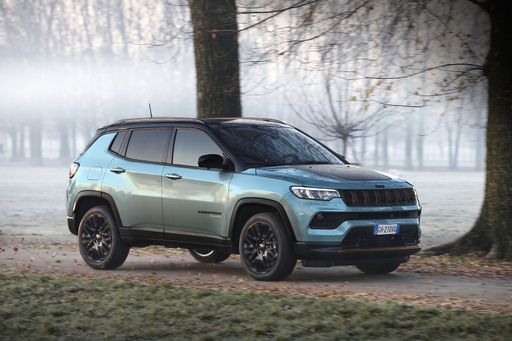 @ media.stellantis.com
@ media.stellantis.com
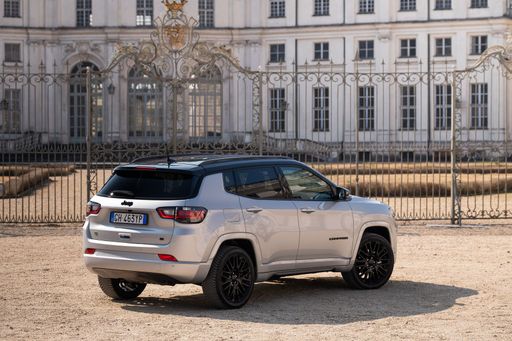 @ media.stellantis.com
@ media.stellantis.com
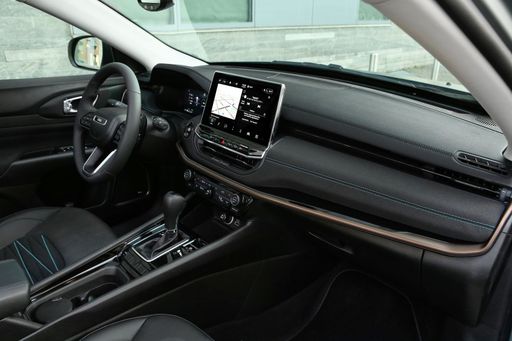 @ media.stellantis.com
@ media.stellantis.com
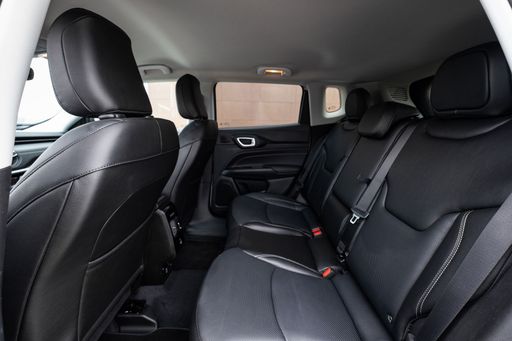 @ media.stellantis.com
@ media.stellantis.com
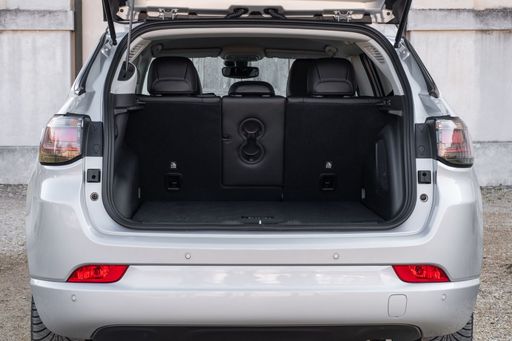 @ media.stellantis.com
@ media.stellantis.com
MG HS/EHS
The MG HS, also known as the EHS in its hybrid variant, is a midsize SUV that combines modern design with a focus on comfort and technology. Its spacious interior offers a premium feel, enhanced by quality materials and an array of advanced features aimed at ensuring a smooth driving experience. Known for its efficiency, the MG HS/EHS delivers an enjoyable ride whether navigating city streets or taking on longer road trips.
details

|
|
|
|
|
Costs and Consumption |
|
|---|---|
|
Price
34200 - 46900 £
|
Price
24000 - 36000 £
|
|
Consumption L/100km
2 - 5.9 L
|
Consumption L/100km
0.5 - 7.6 L
|
|
Consumption kWh/100km
17.50 kWh
|
Consumption kWh/100km
-
|
|
Electric Range
36 - 500 km
|
Electric Range
100 km
|
|
Battery Capacity
74 kWh
|
Battery Capacity
-
|
|
co2
0 - 133 g/km
|
co2
14 - 173 g/km
|
|
Fuel tank capacity
36 - 55 L
|
Fuel tank capacity
55 L
|
Dimensions and Body |
|
|---|---|
|
Body Type
SUV
|
Body Type
SUV
|
|
Seats
5
|
Seats
5
|
|
Doors
5
|
Doors
5
|
|
Curb weight
1575 - 2198 kg
|
Curb weight
1625 - 1930 kg
|
|
Trunk capacity
420 - 550 L
|
Trunk capacity
441 - 507 L
|
|
Length
4404 - 4552 mm
|
Length
4655 - 4670 mm
|
|
Width
1819 mm
|
Width
1890 mm
|
|
Height
1629 - 1675 mm
|
Height
1663 - 1664 mm
|
|
Max trunk capacity
1230 - 1387 L
|
Max trunk capacity
1291 - 1484 L
|
|
Payload
465 - 470 kg
|
Payload
400 kg
|
Engine and Performance |
|
|---|---|
|
Engine Type
Petrol MHEV, Plugin Hybrid, Electric
|
Engine Type
Petrol, Plugin Hybrid, Full Hybrid
|
|
Transmission
Automatic
|
Transmission
Manuel, Automatic
|
|
Transmission Detail
Dual-Clutch Automatic, Automatic Gearbox, Reduction Gearbox
|
Transmission Detail
Manual Gearbox, Dual-Clutch Automatic, Automatic Gearbox
|
|
Drive Type
Front-Wheel Drive, All-Wheel Drive
|
Drive Type
Front-Wheel Drive
|
|
Power HP
130 - 240 HP
|
Power HP
170 - 272 HP
|
|
Acceleration 0-100km/h
7.3 - 10.3 s
|
Acceleration 0-100km/h
6.8 - 9.6 s
|
|
Max Speed
180 - 200 km/h
|
Max Speed
190 - 195 km/h
|
|
Torque
230 - 345 Nm
|
Torque
275 - 350 Nm
|
|
Number of Cylinders
4
|
Number of Cylinders
4
|
|
Power kW
96 - 177 kW
|
Power kW
125 - 200 kW
|
|
Engine capacity
1199 - 1469 cm3
|
Engine capacity
1496 cm3
|
General |
|
|---|---|
|
Model Year
2024 - 2025
|
Model Year
2024 - 2025
|
|
CO2 Efficiency Class
D, B, A
|
CO2 Efficiency Class
F, B, D
|
|
Brand
Jeep
|
Brand
MG
|
What drivetrain options does the Jeep Compass have?
The Jeep Compass is available as Front-Wheel Drive or All-Wheel Drive.
The prices and data displayed are estimates based on German list prices and may vary by country. This information is not legally binding.
